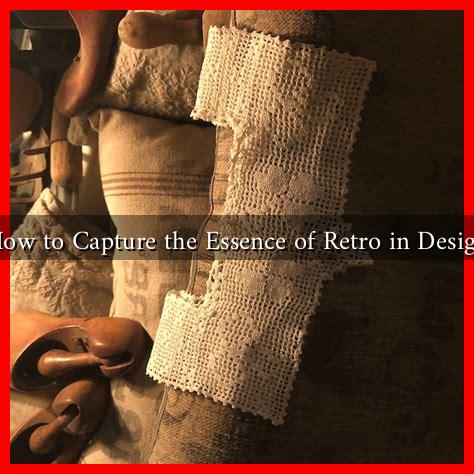-
Table of Contents
How to Capture the Essence of Retro in Design
In a world dominated by modern minimalism and sleek aesthetics, the retro design trend has emerged as a nostalgic counterpoint, celebrating the styles of the past. Retro design evokes feelings of warmth, familiarity, and charm, making it a popular choice in various fields, from graphic design to interior decor. This article explores how to effectively capture the essence of retro in design, providing insights, examples, and practical tips.
Understanding Retro Design
Retro design refers to styles that are reminiscent of past decades, often characterized by bold colors, vintage typography, and nostalgic imagery. It draws inspiration from various eras, including the 1920s Art Deco, the 1950s Mid-Century Modern, and the vibrant 1980s pop culture. Understanding the historical context of these styles is crucial for any designer looking to incorporate retro elements into their work.
Key Elements of Retro Design
To effectively capture the essence of retro in design, consider the following key elements:
- Color Palette: Retro designs often feature vibrant and contrasting colors. For instance, the 1960s embraced bold oranges and greens, while the 1980s favored neon hues.
- Typography: Vintage fonts play a significant role in retro design. Look for typefaces that reflect the era you are drawing inspiration from, such as serif fonts for a 1920s feel or playful script fonts for a 1950s diner vibe.
- Patterns and Textures: Incorporate patterns like polka dots, stripes, or geometric shapes that were popular in past decades. Textures such as grainy finishes or distressed effects can also enhance the retro feel.
- Imagery: Use vintage illustrations, photographs, or graphics that evoke nostalgia. This could include retro advertisements, classic cars, or iconic pop culture references.
Case Studies: Successful Retro Design
Several brands and designers have successfully embraced retro design, creating memorable and impactful visuals. Here are a few notable examples:
- Pepsi: The brand’s logo has undergone several redesigns, but its retro-inspired logos from the 1970s and 1980s have been reintroduced in limited-edition products, appealing to nostalgia while maintaining modern relevance.
- Urban Outfitters: This retail brand often incorporates retro aesthetics in its product designs and store layouts, featuring vintage-inspired clothing and home decor that resonate with a younger audience seeking authenticity.
- Netflix’s “Stranger Things”: The show’s marketing and visual identity heavily draw from 1980s pop culture, utilizing retro fonts, color schemes, and imagery that evoke the era, successfully attracting both nostalgic viewers and new fans.
Practical Tips for Capturing Retro Essence
To effectively incorporate retro elements into your design projects, consider the following practical tips:
- Research Historical Context: Familiarize yourself with the design trends of the specific era you wish to emulate. Books, documentaries, and online resources can provide valuable insights.
- Use Design Software: Tools like Adobe Illustrator and Photoshop offer features that can help you create vintage effects, such as grain filters and texture overlays.
- Mix and Match: Don’t be afraid to blend elements from different eras. Combining styles can create a unique retro aesthetic that feels fresh and original.
- Stay Authentic: While it’s tempting to modernize retro designs, strive to maintain authenticity. Use original color palettes and typography to stay true to the era.
Conclusion
Capturing the essence of retro in design is about more than just aesthetics; it’s about evoking emotions and memories associated with the past. By understanding the key elements of retro design, studying successful case studies, and applying practical tips, designers can create compelling visuals that resonate with audiences. Whether you’re designing a logo, a website, or an interior space, embracing retro elements can add depth and character to your work. As the saying goes, “What’s old is new again,” and in the world of design, retro is here to stay.
For further reading on retro design trends, check out Smashing Magazine.

